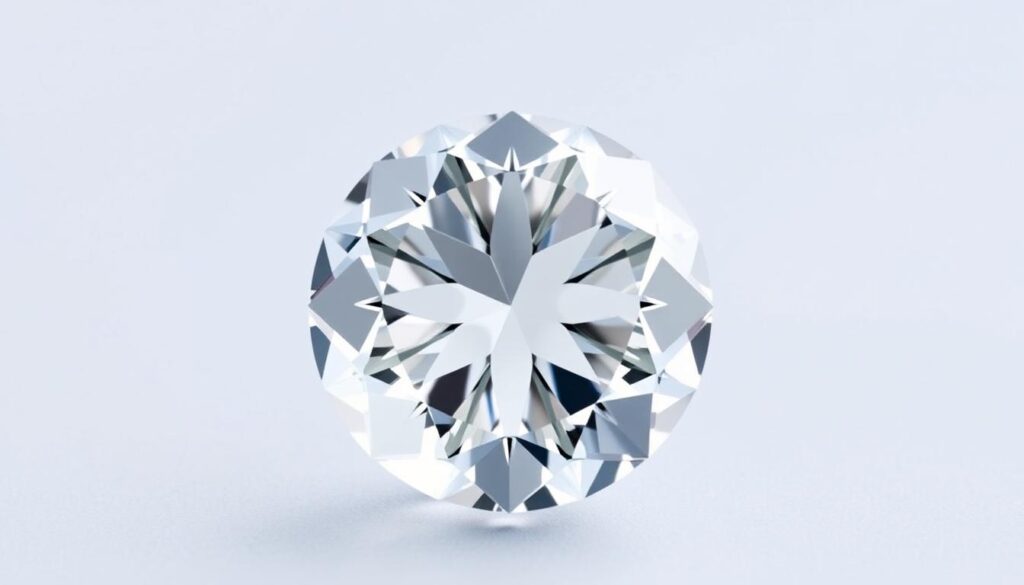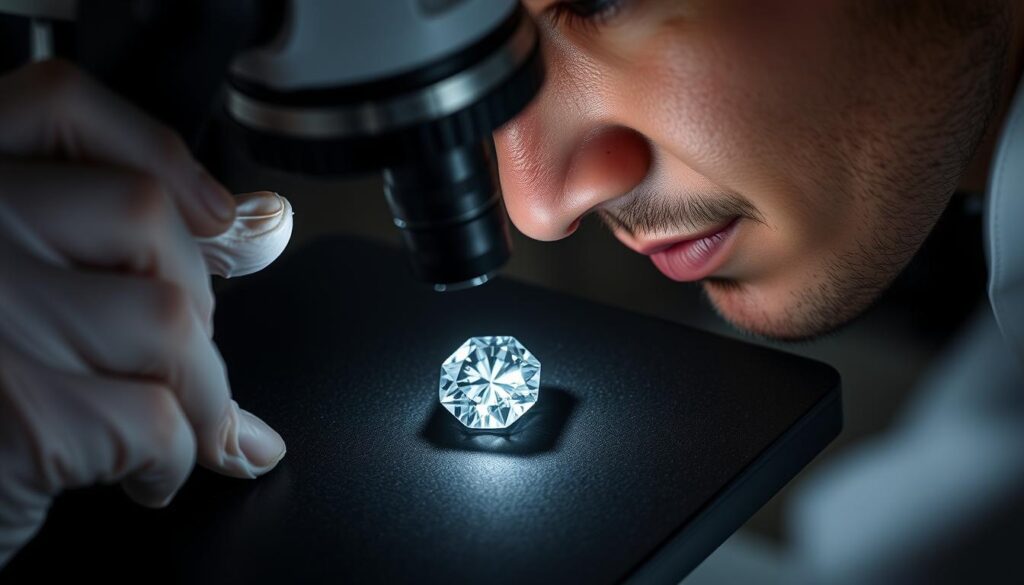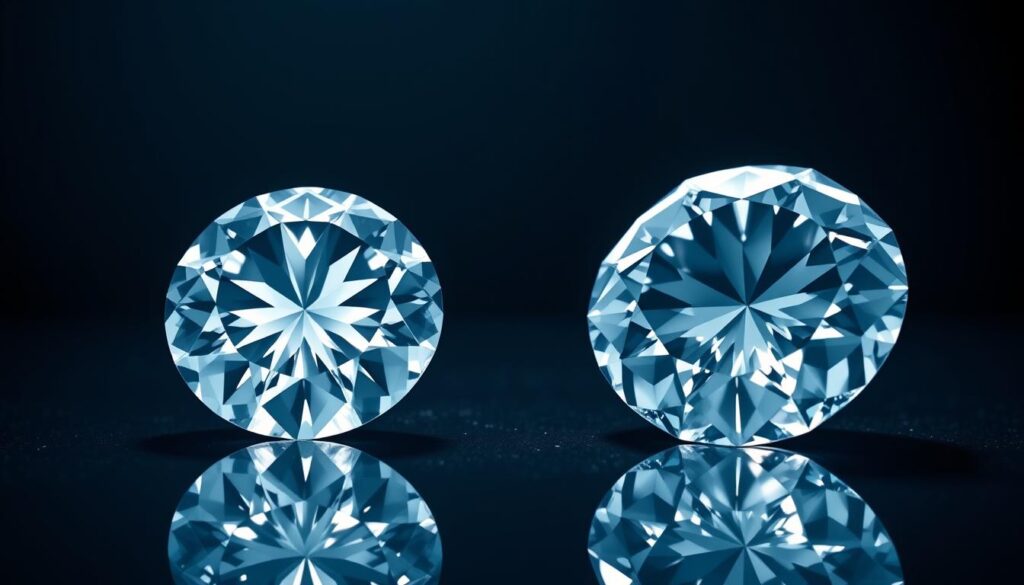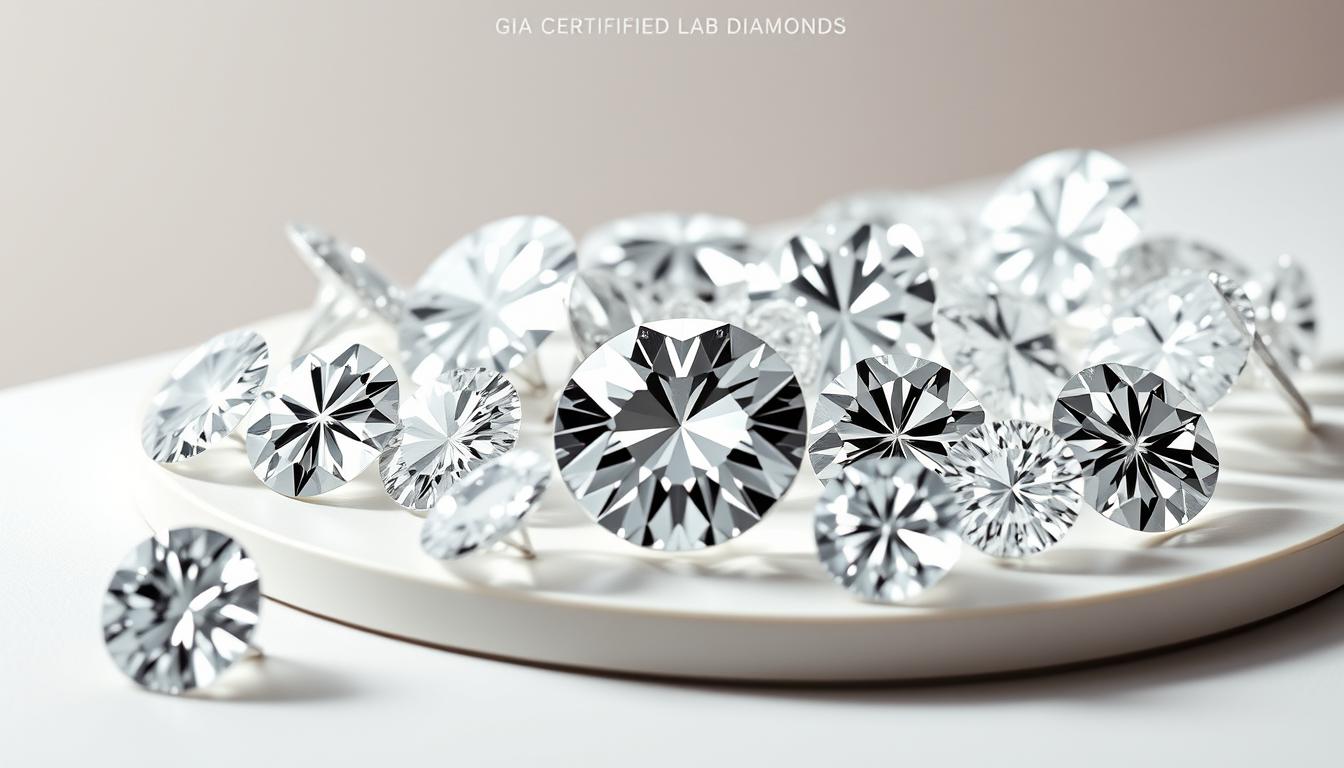The world of jewelry is undergoing a significant transformation with the advent of lab-grown diamonds. These diamonds, created through advanced technological processes, offer the same brilliance and fire as their earth-mined counterparts, but with a more affordable price tag and a clearer conscience.
As consumers become increasingly aware of the environmental and social impact of their purchasing decisions, lab-grown diamonds are gaining popularity. They represent a quality alternative in the jewelry market, combining the luxury of a diamond with sustainability.
The Gemological Institute of America (GIA) plays a crucial role in ensuring the quality and authenticity of these diamonds. GIA certification provides assurance to buyers, making informed decisions easier when purchasing a diamond.
The Evolution of Lab-Grown Diamonds
Over the years, lab-grown diamonds have evolved significantly, from their initial industrial applications to becoming viable gemstones. This transformation has been driven by advancements in technology and manufacturing processes.
From Industrial Beginnings to Gem-Quality Stones
In the mid-1980s, manufacturers began growing commercial quantities of gem-quality laboratory-grown diamond crystals. Initially, these lab-created diamonds were mostly small and yellowish or brownish in color. However, their quality improved over the ensuing decades. Technological advancements played a crucial role in this improvement.
Technological Breakthroughs: HPHT and CVD Methods
The production of lab-grown diamonds is primarily achieved through two methods: High Pressure High Temperature (HPHT) and Chemical Vapor Deposition (CVD). The HPHT method mimics the natural conditions under which diamonds form in the earth, using extreme pressure and heat to transform carbon into diamond. In contrast, the CVD method involves introducing carbon-rich gas into a chamber where it breaks down and deposits carbon atoms onto a substrate to form a diamond. The 2000s saw significant advancements with the CVD method, enabling the creation of gem-quality diamonds at lower pressures and temperatures than HPHT. By the mid-2010s, colorless laboratory-grown diamonds were available in commercial quantities.
Both HPHT and CVD continue to be popular methods of laboratory-grown diamond production, each with its own advantages and characteristics. As technology continues to advance, the quality and affordability of lab-grown diamonds are expected to improve further.
Understanding GIA Lab Diamonds

As consumers become more aware of lab-grown diamonds, understanding GIA certification is essential. GIA lab diamonds have gained significant attention in the jewelry market due to their quality and affordability. The Gemological Institute of America (GIA) is a renowned organization that provides unbiased certification for diamonds, including those grown in laboratories.
What Makes a Diamond “GIA Certified”
A diamond is considered “GIA Certified” when it is evaluated and graded by the GIA based on its characteristics, such as cut, color, clarity, and carat weight. GIA certification involves a thorough examination to ensure that the diamond is accurately represented and meets certain standards. This certification is crucial for laboratory-grown diamonds, as it provides transparency regarding their origin and characteristics.
The Importance of GIA Certification for Lab Diamonds
GIA certification plays a pivotal role in the lab-grown diamond market. It provides confidence to consumers by ensuring the quality and authenticity of the diamond. The certification also brings transparency by clearly identifying the diamond as laboratory-grown and detailing its specific characteristics. As a result, GIA-certified lab diamonds often hold a higher market value compared to non-certified stones. This is because the GIA brand is associated with trust and credibility.
The importance of GIA certification can be seen in several areas:
– It provides transparency by clearly identifying the diamond as laboratory-grown and detailing its specific characteristics.
– It builds consumer confidence by offering assurance about the diamond’s quality from a trusted, independent authority.
– It enhances the market value of lab diamonds compared to non-certified stones due to the credibility associated with GIA.
– It helps consumers make informed purchasing decisions by providing standardized, reliable information about the diamond.
GIA’s Approach to Grading Lab-Grown Diamonds
In response to advancements in diamond-growing technology, GIA is introducing a new classification system for lab-grown diamonds. This change reflects the significant progress made in producing high-quality laboratory-grown diamonds, with 95% now falling within a very narrow color range (D-F) and 98% having a clarity of VS1 or higher.

The Evolution of GIA’s Lab Diamond Reports
GIA’s approach to grading lab-grown diamonds has undergone significant changes. Initially, lab-grown diamonds were graded using the same criteria as natural diamonds. However, as technology improved, GIA adapted its grading reports to better suit the characteristics of lab-grown diamonds. The latest update continues this trend, focusing on a more nuanced differentiation within the lab-grown category.
New Premium vs. Standard Classification System
The new classification system assigns lab-grown diamonds to either “Premium” or “Standard” categories, replacing specific color and clarity grades. This change is driven by the compression in quality range due to technological advancements. The Premium category is expected to command a higher value due to its superior characteristics, potentially influencing consumer perception and pricing in the market.
The criteria for the Premium classification include exceptional color, clarity, and finish. Lab diamonds that meet these stringent criteria will be classified as Premium, while others will be categorized as Standard. This differentiation is designed to provide consumers with a clearer understanding of the lab diamond’s quality and origin, enhancing confidence in their purchasing decisions.
Quality Assessment: The 4Cs of Lab Diamonds
The 4Cs of lab diamonds – color, clarity, cut, and carat weight – are the key factors in assessing their overall quality and value. The Gemological Institute of America (GIA) employs a grading system for lab-grown diamonds that is similar to that used for natural diamonds, with specific wording to distinguish between the two.
Color and Clarity Considerations
When evaluating laboratory-grown diamonds, color and clarity are crucial factors. The GIA grading system assesses color on a scale from D (colorless) to Z (light yellow or brown), while clarity is evaluated based on the presence or absence of inclusions and blemishes. The clarity scale ranges from Flawless (FL) to Included (I).
Cut and Carat Weight Evaluation
Cut quality is evaluated based on proportions, symmetry, and polish, as these factors significantly impact a diamond’s brilliance and sparkle. Carat weight, on the other hand, is measured identically for both lab-grown and natural diamonds, as it is simply a unit of mass. Excellent cut quality can maximize the beauty of a lab diamond, potentially allowing for a lower color or clarity grade while still achieving a beautiful appearance.
Balancing the 4Cs is essential when selecting a lab diamond to achieve the best value and visual appeal. By considering all these factors together, consumers can make informed decisions when purchasing a lab-grown diamond.
Lab Diamonds vs. Natural Diamonds: Key Differences
The primary differences between lab-grown diamonds and natural diamonds lie in their formation processes and characteristics. While both types of diamonds share similar physical and chemical properties, their origins and production methods are distinct.
Physical and Chemical Properties
Lab-grown diamonds and natural diamonds exhibit identical physical and chemical properties. Both are composed of pure carbon and have the same crystal structure. The HPHT and CVD methods used to create lab-grown diamonds replicate the natural processes that form diamonds over billions of years. As a result, lab-grown diamonds have the same brilliance and fire as natural diamonds.

Origin and Formation Process
The formation process of natural diamonds occurs deep within the Earth’s crust over billions of years, subjected to extreme pressure and heat. In contrast, lab-grown diamonds are created in controlled environments using advanced technological processes, such as Chemical Vapor Deposition (CVD) and High Pressure High Temperature (HPHT). This difference in origin creates a significant price disparity between the two, despite their identical composition.
The Affordability Factor: Pricing of GIA Certified Lab Diamonds
Understanding the pricing factors of GIA certified lab diamonds is essential for making an informed purchase decision. The price of these diamonds is influenced by several key factors, including the 4Cs, production method, and certification.
Cost Comparison with Natural Diamonds
GIA certified lab diamonds are generally more affordable than their natural counterparts. The cost savings can be attributed to the more efficient production process and reduced environmental impact. On average, lab-grown diamonds can cost 20-40% less than natural diamonds of similar quality.
Factors Affecting Lab Diamond Pricing
Several factors contribute to the final price of GIA certified lab diamonds. These include the 4Cs (carat, color, clarity, and cut), production method (HPHT or CVD), and market demand. The certification from GIA adds value to the diamond, typically commanding a premium over uncertified lab diamonds. As technology continues to advance, production costs are likely to decrease, potentially affecting future pricing trends.
Buyer’s Guide: How to Choose the Right GIA Certified Lab Diamond
To make an informed purchase, look for GIA certification in lab-grown diamonds. GIA certification ensures the diamond’s quality and authenticity.
What to Look for in the GIA Report
When examining the GIA laboratory-grown diamond report, verify the diamond’s characteristics and origin. Understand the 4Cs as outlined in the report to assess the diamond’s quality and value. Check the report number on GIA’s official website to confirm its authenticity.
Questions to Ask Your Jeweler
When purchasing a GIA certified lab-grown diamond, ask your jeweler about the diamond’s growth method (HPHT or CVD) and any post-growth treatments. Inquire about the jewelry setting options that best complement lab diamonds and whether the jeweler has experience working with lab-grown stones. Discuss the jeweler’s return policy and any warranties offered for lab-grown diamonds and related jewelry.
Conclusion: The Future of GIA Certified Lab Diamonds
GIA certified lab diamonds are revolutionizing the way we think about diamond ownership, offering a blend of quality, affordability, and sustainability. As the jewelry industry continues to evolve, these diamonds are poised to play a significant role. With GIA certification, consumers can trust the authenticity and quality of their lab-grown diamonds.
The future looks bright, with technological advancements expected to further improve quality and reduce costs. As consumer preferences shift towards more ethical and environmentally friendly options, lab diamonds are likely to gain even more popularity. GIA’s new Premium/Standard classification system will also influence the market, providing clearer guidelines for consumers.
In conclusion, whether you choose a lab diamond or a natural diamond, what’s most important is making an informed decision based on your personal values, preferences, and budget. Both options offer beauty and quality when properly certified.
